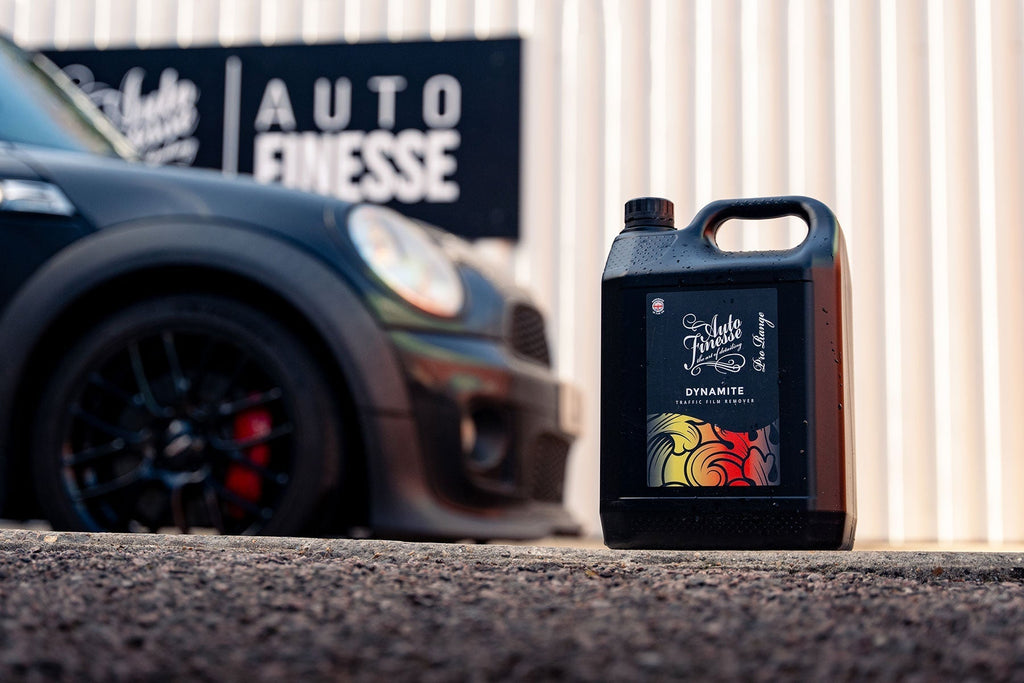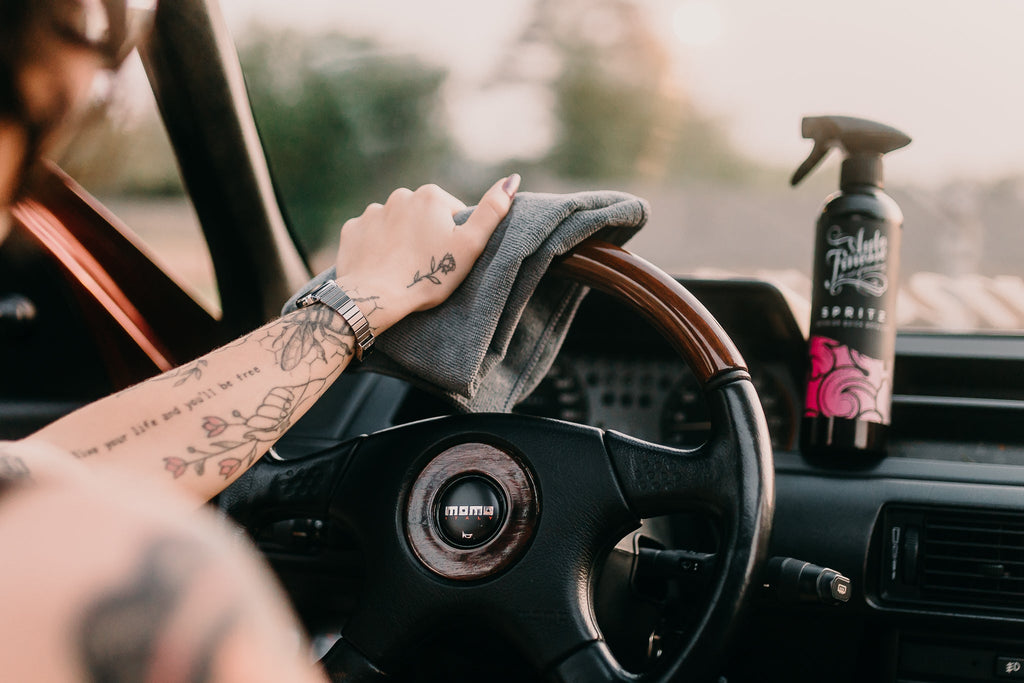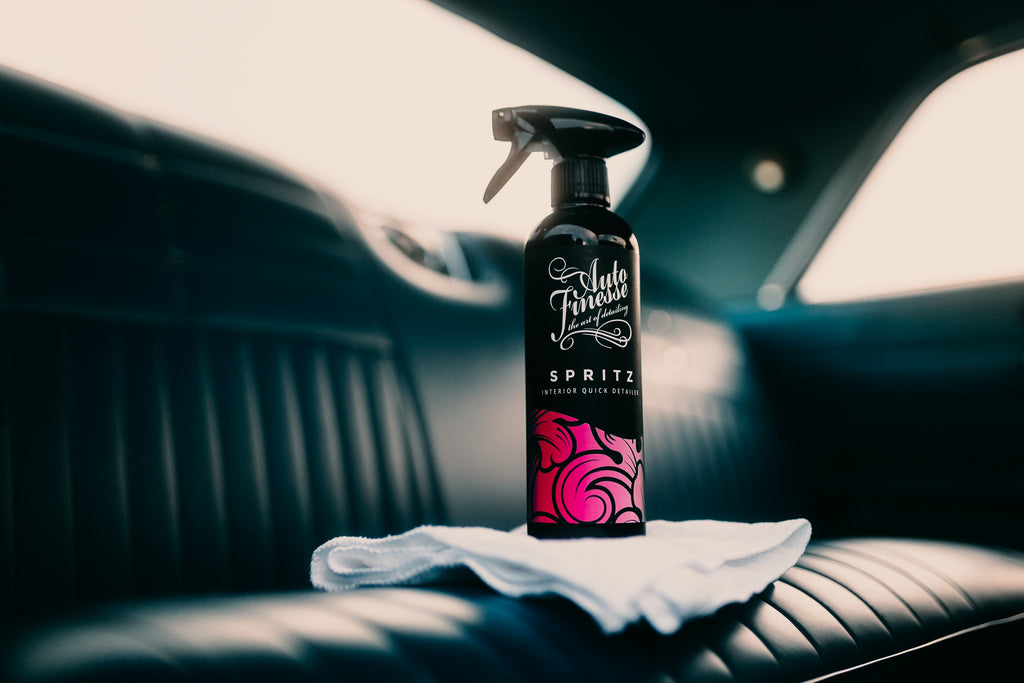What is a Ceramic Coating?

In This Guide:
- Discover the benefits of using ceramic protection on every part of your car.
- Learn what ceramic coatings are, what they're made of and how they work.
- See how to prepare your vehicle for the application of ceramic products.
- Learn how to maintain the life and performance of your protection layers.
What are the benefits of ceramic protection? What is a ceramic coating? How do I use a ceramic? And how does a ceramic coating work? When it comes to the use of ceramics in the best detailing products, they’re all good questions. So, let’s take a look at everything you need to know…

What is a ceramic?
Scientifically speaking a ceramic material is a non-organic, non-metallic compound, usually based on an elemental oxide. These substances are typically crystalline or glassy (or both), extremely hard and non-reactive to chemicals. Ceramics are used in everything from fibre optics and electrical super-conductors to vehicle braking systems and fuel cells, along with the more traditional stuff we see as ceramic such as glass, teapots, bricks and cement.
But what about ceramics in detailing? Well, in our world the unique properties of ceramic compounds are utilised specifically for the most extreme hydrophobic surface protection. Most commonly we’re talking about the most hardcore, longest-lasting paintwork protection here, but it’s worth noting that it’s not only hard surfaces like paint, lacquer, plastic trim, vehicle lights, glass and vinyl wraps that can benefit from ceramic protection, soft interior surfaces can also benefit using a ceramic product like our Caramics Interior Protection Kit.

What type of ceramic is used in detailing?
The ceramic protection products we use in the detailing are based on Silicon Dioxide (Si02). As the name would suggest this ceramic compound is an oxide created when chemists promote a reaction where two oxygen atoms bond with a single silicon atom… But let’s not worry about the chemistry because what’s most important is that SiO2 is also known as Silica and the main ingredient in quartz, glass and sand.
The Silicon Dioxide contained within these specialist detailing products is the reason why they are referred to as ceramic. When you find a product - most commonly seen in professional paint coatings - sporting a flashy name that includes the term glass or quartz, it’s simply a spot of clever marketing, for the most part they’re all the same type of product and nearly always based on a specific content of SiO2.

Why use SiO2?
Why use silicon dioxide in detailing products then? This comes down to the characteristics of the compound and the longevity of the protection it can provide.
Silica is extremely hardwearing and abrasion resistant. In a way introducing a microscopic layer of Si02 to any surface is like adding a barrier of toughened glass, only on a molecular level so it’s actually pretty flexible, too. Unlike a wax or a sealant this completely clear, hydrophobic layer of SiO2 chemically bonds to become an integral part of the very top of the surface itself.
Waxes and sealants physically bond, meaning that they’re a separate layer that physically clings on, but the chemical bond created by a ceramic layer makes it substantially more difficult to remove. Being more resistant to cleaning chemicals also helps but it’s the chemical bonding which ensures that ceramic layers are longer-lasting than all other types of protection. In other words, Si02 protection will stay on there for significantly longer than any equivalent wax or paint sealant.

How long does ceramic protection last?
The period of protection always depends on the specific product, application method and how it’s looked after during routine maintenance. We have ceramic products that range in durability from around 3-months or so to well over a year, far outlasting the performance of equivalent products based on waxes and sealants. What’s most important for the question of longevity is how easily any type of protection product is removed.
Ceramic layers can only be removed fully with friction, whether that’s through polishing, during washing or by the abrasion caused by air moving over your vehicle when you drive. The polishing and washing parts are perhaps most straightforward. You don’t polish a ceramic coating unless you want to remove it, the reason why any paint correction processes are performed before adding any protection layer. The whole point of polishing is to enhance the paint or clearcoat layer.
We also use the correct safe wash techniques to limit the friction created by our mitt or any grime sitting on top of the ceramic layer. The same procedure we use to limit any swirl marks inflicted on bare paintwork.
The air friction acting on exterior surfaces while driving however, is more important than may people realise. It’s one of the reasons why no protection layer - including ceramics - can physically last forever. But again, this friction acting on a chemically-bonded ceramic coating has much less effect than on a physically bonded wax or sealant. Again, the chemical bonding is the reason why (even without strong cleaning chemicals) it’s much easier to remove a wax or sealant, and why they can’t last as long.

Why are ceramic products hydrophobic?
Not all ceramics are hydrophobic, but the Si02 we use in detailing, or more specifically the barrier it creates when bonded to the surface, is highly water repellent on a molecular level. This comes with several benefits for all of us.
The ceramic layer we introduce is essentially a surface made up of tight-knit, non-reactive molecules. This physical characteristic makes it extremely smooth; far smother than the paintwork, glass or plastic before the coating is applied, no matter how polished it is. This lack of ruts and recesses in the surface gives nothing for foreign molecules to cling to and, in the case of water, this is why it’s neither able to hold on or penetrate. This means that your water will either run straight off the surface or bead up. In both cases the water is sitting on top layer without being able to take hold.
Now obviously, this great for your vehicle glass because all the water runs off and you can see better, right? But what are the benefits for the other exterior surfaces? Well, water molecules are even smaller than grime, and if they can’t hold on, neither can the muck and other large particles. Because the dirt (along with bug spatter and all the other contamination picked up when you’re driving) can’t stick it not only ensures that your maintenance washes are easier, requiring milder cleaners and less of them, but it’ll stop dirt form sticking in-between washes. That’s how ceramic detailing products can keep your car cleaner for longer.
For more on the benefits of ceramic detailing products, check out our article – What Difference Does A Ceramic Coating Make?

Will a ceramic product make my paintwork shine?
Absolutely, Si02 layers are perfectly clear but the intense shine they provide isn’t to do with the opacity of the layer itself, it’s actually created by the extremely smooth surface they introduce.
Instead of light bouncing off in multiple directions, as it would with a surface that’s packed with ruts, a smooth surface reflects light in a more uniform direction giving the appearance of more depth and gloss. In this way a ceramic coating works in a similar way to physical polishing (which smooths the top layer) and the application of other protection products which smooth out the surface. In many cases the gloss introduced can be more than with a wax or a sealant. In detailing we call this process levelling the optical finish.

How are ceramic detailing products applied?
Introducing the layer of Si02 itself isn’t the issue here, that’s actually simple part. SiO2 bonds instantly to surfaces so getting it on there won’t be a problem for you. The real considerations here are the durability period you require and just HOW easy you want to make it. We have a full selection of ceramic protection products formulated for specifically for different purposes.
Take our Ceramic Spray Wax for example. This Si02 based product introduces a ceramic layer that offers intense beading and easy-clean characteristics for up to 3-months… all in a formula designed to be as easy to use as a traditional wax-based finishing spray. In other words, all it takes is a spritz over each panel followed by a wipe and buff with a clean microfibre cloth.
We’ve also developed ceramic-based products that can be used while your vehicle is still wet, at the end of your wash stage. Aqua Coat Hydrophobic Rinse Aid is a super-quick ‘spray on and rinse off’ product that offers 3-months of protection and Lavish Ceramic Foam can be applied with your Snow Foam Lance for an Si02 layer that’s durable for up to 6-months.
Collectively these products are not only the simplest to apply and useful for introducing a ceramic layer, but they’ll also top up the durability (and performance) of your ceramic coatings during every round of routine maintenance… don’t worry, we’ll get to that.



The Caramics Range
It stands to reason that getting the most SiO2 on there will create a stronger layer and for that we have our Caramics Protection Kits, which essentially offer a modern twist on traditional ceramic coatings.
Chiefly designed to be used after machine polishing and correction on paint and glass (and after deep cleaning wheels and interiors), these products are just like a traditional coating designed for professional application. The idea is to add a relatively thick (on a molecular level anyway) layer of Si02 for the most extreme, long-lasting protection. The only difference is that we’ve made the application process easier and more suitable for use at home.
Unlike traditional coatings that can be difficult (and even dangerous) to apply, we’ve made the transfer method – the bit that applies the coating – safe and straightforward. On paintwork, glass and exterior trim we use specially impregnated resin/glass wipes. And on wheels and interior fabrics (including cloth and leather) our kits utilise a specially formulated spray. Caramics Protection Kits offer 12-months of durability and the best hydrophobic performance – all the advantages of a traditional coating, without the hassle or cost of professional application.

How should I prepare my car for a ceramic coating?
First of all, the surfaces you’re planning on coating will need to be free of contamination and spotlessly clean. This is because, at the very least, you don’t want anything on the surface blocking the contact of the coating and stopping it forming a strong chemical bond. Mostly though, you don’t want your coating locking in any dust, grime or contamination underneath. This is why the first part of the job will always be a deep-clean and decontamination wash.
What’s also important is that ceramic coatings are like all true protection products. They’re non-abrasive so while they will always enhance the shine on paintwork, they won’t correct the type of surface defects (like scratches and swirl marks) that require polishing. You don’t want to go locking these in, either right? This is the reason why it’s important to carry out any paint correction you require before application of your coating.
Again, keep the bonding process in mind during any polishing. You’ll need to use products such as our Revitalise Compounds and our Professional Series Compounds which don’t contain any waxes or sealants. Polishing using products that leave behind protection layers is great if you’re using a wax for your final protection, but is not suitable for ceramic coatings because it will block the essential chemical bonding.

How do I maintain my ceramic coating?
Keeping your ceramics performing for the maximum amount of time is always the goal for detailers, but it’s actually simpler than might think. Using the same safe wash techniques that you would to avoid swirl-marks is the first hurdle. Performing your pre-wash effectively, followed by a safe contact wash is the best way to cut down on friction, so you’ll be inflicting less abrasion on surfaces. This goes for any routine maintenance wash, no matter your choice of protection.
As we said ceramics are extremely resilient to the harshest cleaning chemicals but, just like with every wash, it makes sense to use wax, coating and sealant-safe pre-wash products like Citrus Power Bug & Grime Remover and Avalanche Snow Foam, along with Lather Car Shampoo during your contact wash, anyway. If anything, the easy-clean properties of our SiO2 coatings will mean that you’ll need even less of your cleaning products, saving you money along the way. Check out our Detailer’s Safe Wash Guide for everything you could ever need to know.

How do I top up my ceramic coating?
Another great way of prolonging their life, hydrophobic performance and gloss comes from topping up after (or during) every wash. Swapping your usual car shampoo for our Caramics Enhancing Shampoo and using our Caramics Gloss Enhancer as your finishing spray will always strengthen any previously applied Si02-based coating on your paintwork, simply because they’re formulated to include SiO2. Our Caramics Glass Cleaner will do exactly the same thing on your exterior glass. In fact, these three products have been specially developed for use with our Caramics Protection Kits and are powerful enough to install a ceramic coating all on their own.
The short story is that regular top ups are always beneficial for any surface that’s already been ceramic coated, no matter if you choose Aqua Coat, Ceramic Spray Wax, Lavish Ceramic Foam or our Caramics Support Products to do the job. So, for more on the science of maintaining your ceramic coatings see our full article - Maintain and Enhance Your Ceramic Coating.















































